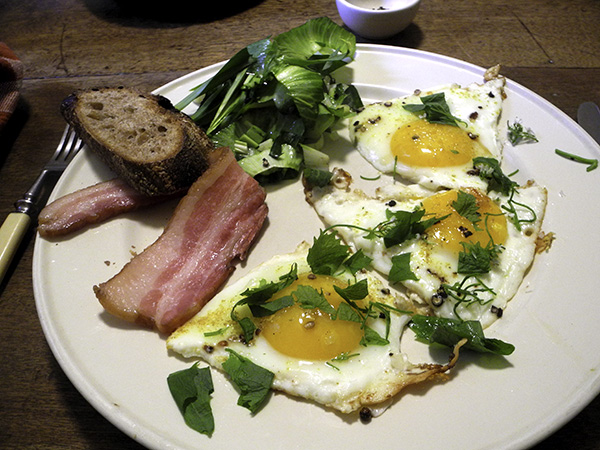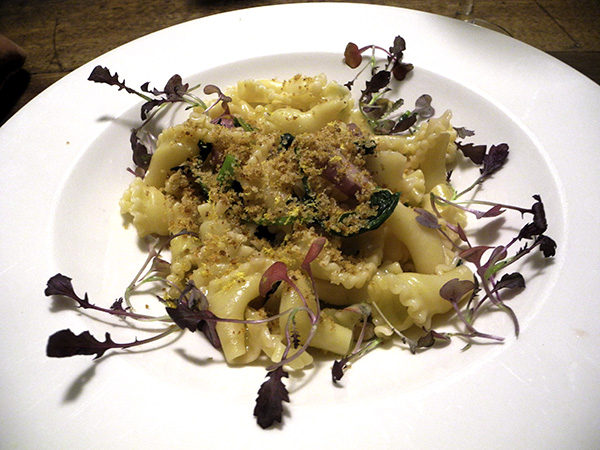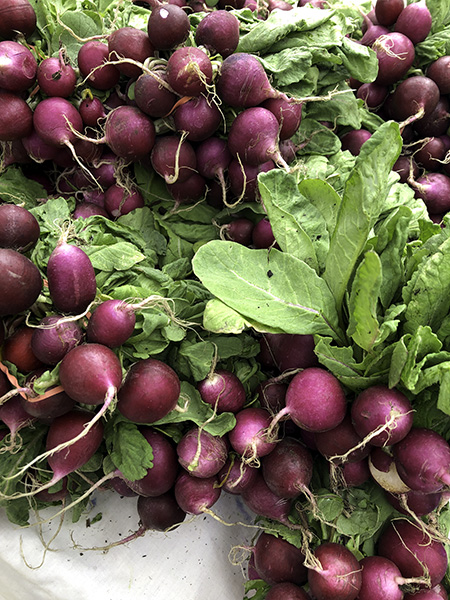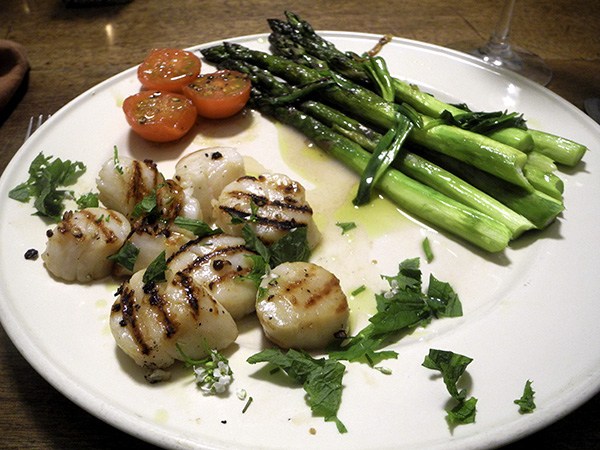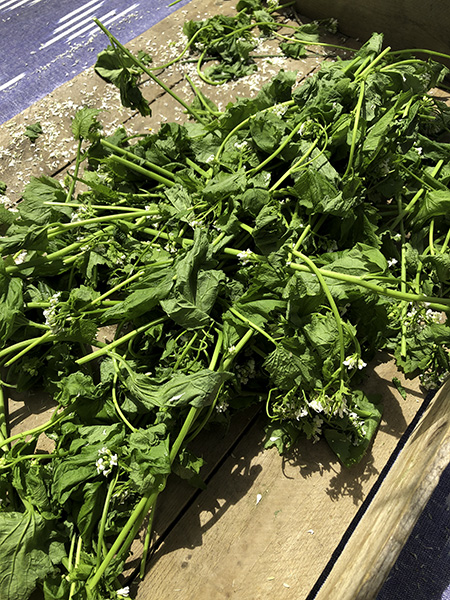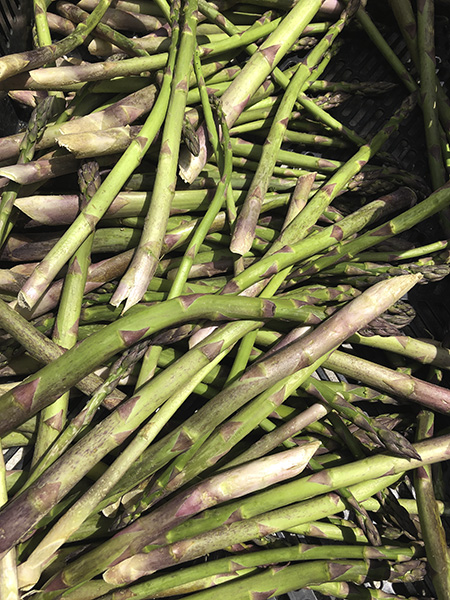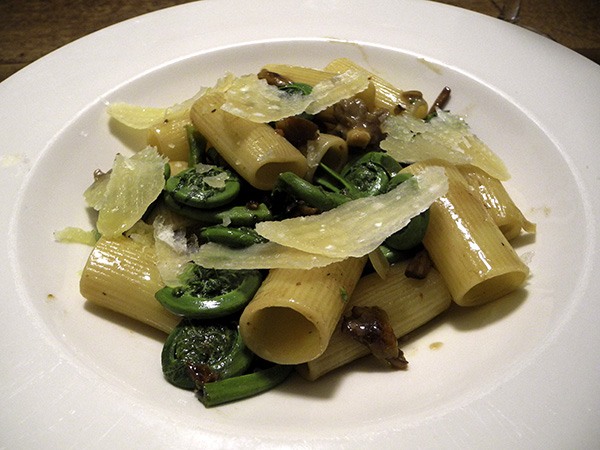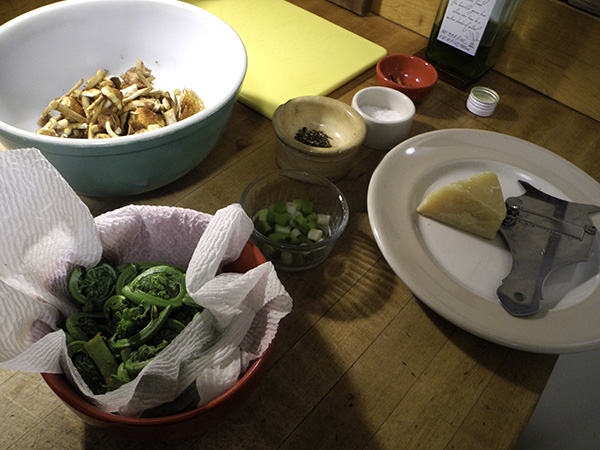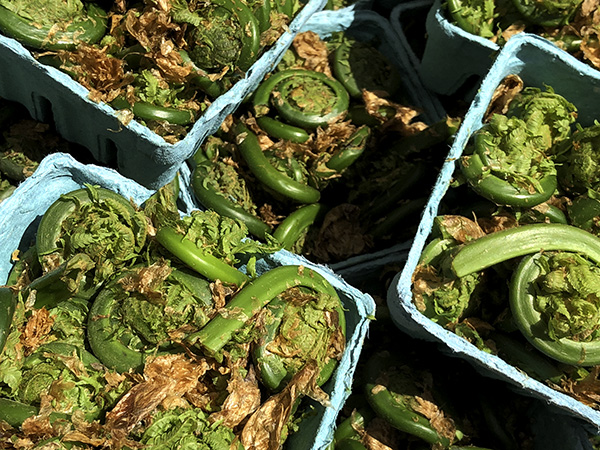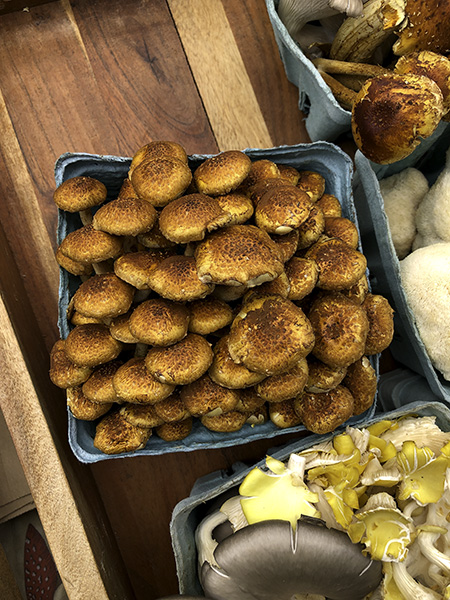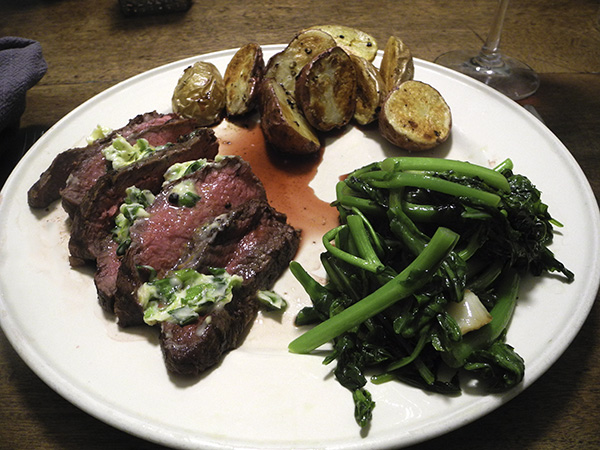
I’ve definitely never cooked a merlot steak, and now after engaging it one on one, I can’t remember whether I had even heard of it before last Saturday. We’d just left an art fair that afternoon, when I realized that while we would be guests at a dinner that evening, we hadn’t yet decided what we’d have for dinner on Sunday. We were near one of our favorite neighborhood butchers, so we walked a few blocks further downtown to our neighborhood whole-animal butcher shop.
Fro some time now my preferred steak has been the culotte, or what Brazilians call the picanha, but it’s not always easy to find, and while Hudson & Charles (located, naturally, on Hudson, near Charles, in the West Village) did have one, its particular size and shape wouldn’t really have worked for us that night, so I asked the butcher what he might recommend in its place.
He suggested a ‘merlot’ (video from the Meathook, another local whole-animal shop), an under-appreciated tender beef steak from the side of the heel inside a larger muscle group called the campanella. I had spotted the word, ‘merlot’ on a label below a steak inside the glass-front cooler just before I asked the question. Its size was perfect, his description made it sound like a winner, and that’s what it turned out to be.
So, 2 days later I found myself in the kitchen with around one pound of an unfamiliar merlot steak, armed with nothing more than salt, pepper, a couple tablespoons of butter, a few ramp leaves, and some lemon zest.
It was terrific, as were the Greenmarket vegetables that joined it.
- before preparing the meat itself, the leaves of half a dozen ramps (maybe one or 2 tablespoons) from Mountain Sweet Berry Farm, washed, dried, and chopped, half a teaspoon of zest from a Chelsea Whole Foods Market organic lemon, sea salt, and some freshly ground black pepper were mixed into 2 and a half tablespoons of softened butter, molded into squares or pats, then set in the refrigerator to chill, removed just as the steak was beginning to cook, meaning one 15-ounce ‘merlot’ steak from Hudson & Charles, halved, dried, rubbed generously with sea salt and freshly ground black pepper, was set aside for about an hour, after which time it was placed inside a grill pan already quite hot above a fairly high flame, where the steaks remained, although turned at least once, for about a total of 6 minutes, or until they were medium rare (after they had mostly cooked, I loosely tented the 2 pieces with aluminum foil, and removed both foil and steaks when an instant read thermometer indicated they were medium rare), allowed to rest for 8 minutes or so, then quickly cut across the grain into 1/2″ sections, the reserved ramp butter spread on top
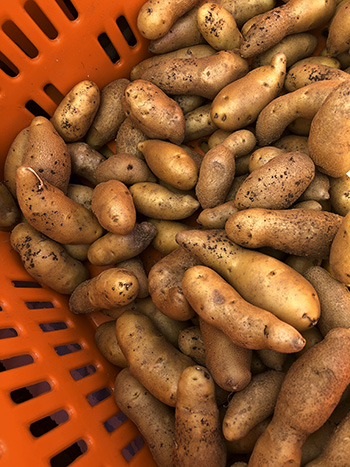

- five buttery pinto potatoes from Norwich Meadows Farm and 5 sweet redskin potatoes from Race Farm (what remained that night from a larger stock of each), all halved, tossed with a little olive oil (barely a tablespoon), salt, black pepper, a pinch of hickory smoked Jamaican Scotch Bonnet pepper from Eckerton Hill Farm, and another pinch of home dried habanada pepper, originally from Norwich Meadows Farm, spread across the surface of a large Pampered Chef unglazed ceramic pan and roasted at 400º for a little longer than 20 minutes

- broccoli rabe from Migliorelli Farm, washed and drained 3 times, braised inside a large, heavy antique copper pot in which two halved garlic cloves from Foragers Market had been allowed to sweat in some olive oil, the dish finished with salt, black pepper, and a drizzle of olive oil
- the wine was a Spanish (Castile and León/Gredos Mountains) red, Ruben Diaz, Gredos Garnacha ‘La Escalera’ 2016, from Flatiron Wines
- the music was the album, ‘Dutch Symphonies’, Anthony Halstead conducting the Netherlands Radio Chamber Orchestra, including 2 works by Carolus Antonius Fodor, and one by Johan Gabriel Meder
